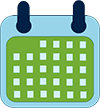Schedule
Not offered 2025/26
Overview
Most scientists, particularly in the early phases of their career, are expected to present the results of their research in the form of a conference poster. Yet unlike oral presentations, students receive little training on this mode of scientific communication.
The course material will be conveyed through a series of weekly instructor and student-led seminars that include presentations and group discussion. This course is offered in-person only.
The course will consist of 5 modules (focal topics) covered over the term. Presentations will be made by the instructor, with each student expected to also make a presentation on one of the focal topics. It is expected that each week will entail two to three hours of work, including self-directed study, presentations, and group discussion.
Focal topics
Week 1: The history of poster presentations as a tool in life science communication
Week 2: Basic “Do’s and Don’ts” of poster design – preference vs. design flaws
Week 3: Accessibility issues in poster design – thinking beyond the majority
Week 4: Thinking outside the box: Using modern technology to enhance traditional posters
Week 5: Putting it into practice – group design exercise for a conference poster
Learning objectives:
- To develop an understanding of some best practices in the development of poster presentations for engaging audiences of varying levels of scientific understanding.
- To demonstrate the ability to communicate scientific research from an accessibility standpoint, focusing on features such as easy to follow layouts and accessible color schemes for color blind individuals.
Learning outcomes:
- Display effective scientific communication skills from a literary, visual, and oral perspectives.
- Demonstrate the ability to convey information at various levels of understanding.
- Experience with leading graduate-level discussions and effective communication techniques.
Course requirements:
Participation in weekly presentations and group discussions. Giving an oral presentation and leading the discussion on one of the focal topics.
Prerequisites
none
Course Organization
The course is taught be a single faculty member. Students will be evaluated on their weekly contribution to group discussions as well as a presentation on a focal topic.
Required readings:
This list will include selected passages from the following sources, and will be amended and supplemented as needed.
- Briscoe, M. H. (1996) Preparing scientific illustrations: a guide to better posters, presentations, and publications. New York: Springer, 1996.
- Fraser, J., Fuller, L., & Hutber, G. (2009). Creating Effective Conference Abstracts and Posters in Biomedicine. CRC Press 2016.
- Katsnelson, A. (2021). Fixing Figures For Colour Blindness. Nature, 598, 224-225.
- Mineiro, J. P. (2015) Accessible urban posters to blind people: a proposal for a design template for all, based on a mobile solution. InfoDesign : Brazilian journal of information design, 12(1), 143.
- Patience, G. S., Boffito, D. C., & Patience, P. A. (2015) Communicate Science Papers, Presentations, and Posters Effectively. Academic Press, 2015.
Instructor
Dr. David Rosen
|
